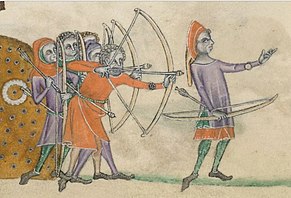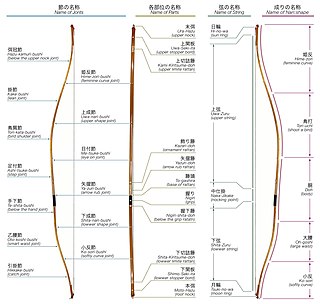 W
WArchery, or the use of bow and arrows, was probably developed in Africa by the later Middle Stone Age. It had been an important military and hunting tactic throughout history, and figures prominently in the mythologies of many cultures. Archers, whether on foot, in chariots or mounted on horses were a major part of most military forces for many years.
 W
WArchery, or the use of bow and arrows, was probably developed in Africa by the later Middle Stone Age. It had been an important military and hunting tactic throughout history, and figures prominently in the mythologies of many cultures. Archers, whether on foot, in chariots or mounted on horses were a major part of most military forces for many years.
 W
WThe arbalest was a late variation of the crossbow coming into use in Europe during the 12th century. A large weapon, the arbalest had a steel prod ("bow"). Since the arbalest was much larger than earlier crossbows, and because of the greater tensile strength of steel, it had a greater force. However, the greater draw weight was offset by the smaller powerstroke, which limited its potential in fully transferring the energy into the crossbow bolt. The strongest windlass-pulled arbalests could have up to 22 kN of force and be accurate up to 100 m. A skilled arbalestier (arbalester) could loose two bolts per minute.
 W
WAn archer's stake was an anti-cavalry defence used by longbowmen in the 15th and 16th centuries.
 W
WThe English longbow was a powerful medieval type of longbow about 6 ft (1.8 m) long used by the English and Welsh for hunting and as a weapon in warfare. English use of longbows was effective against the French during the Hundred Years' War, particularly at the start of the war in the battles of Sluys (1340), Crécy (1346), and Poitiers (1356), and perhaps most famously at the Battle of Agincourt (1415). However they were less successful after this, with longbowmen having their lines broken at the Battle of Verneuil (1424) though the English won a decisive victory, and being completely routed at the Battle of Patay (1429) when they were charged by the French mounted men-at-arms before they had prepared the terrain and finished defensive arrangements. The Battle of Pontvallain (1370) had also previously shown longbowmen were not particularly effective when not given the time to set up defensive positions.
 W
WThe francs-archers militia were the first attempt at the formation of regular infantry in France. They were created by the ordonnance of Montil-lès-Tours on 28 April 1448, which prescribed that in each parish an archer should be chosen from among the most apt in the use of arms; who was to be exempt from the taille and certain obligations, to practise shooting with the bow on Sundays and feast-days, and to hold himself ready to march fully equipped at the first signal. Under Charles VII the francs-archers distinguished themselves in numerous battles with the English, and assisted the king in driving them from France.
 W
WThe Korean Bow is a water buffalo horn-based composite reflex bow, standardized centuries ago from a variety of similar weapons in earlier use. Due to its long use by Koreans, it is also known as Guk Gung. The Korean bow utilizes a thumb draw and therefore employing the use of a thumb ring is quite common. The Korean thumb ring is somewhat different from the Manchu, Mongol, or the Turkish Thumb Ring, as it comes in two styles, male and female. Male thumb rings are shaped with a small protrusion that sticks out that the bowstring hooks behind, while the female thumb ring simply covers the front joint of the thumb as protection from getting blisters.
 W
WNewington Butts is a former hamlet, now an area of the London Borough of Southwark, that gives its name to a segment of the A3 road running south-west from the Elephant and Castle junction. The road continues as Kennington Park Road leading to Kennington; a fork right is Kennington Lane, leading to Vauxhall Bridge. Michael Faraday was born in Newington Butts.
 W
WYumi is the Japanese term for a bow. As used in English, 'yumi' refers more specifically to traditional Japanese asymmetrical bows, and includes the longer daikyū and the shorter hankyū used in the practice of kyūdō and kyūjutsu, or Japanese archery.